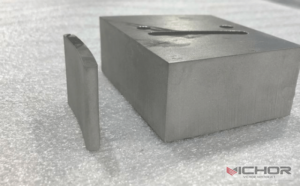
7 Incredible Advantages of Using a High Pressure Water Jet Cutting Machine
In the world of manufacturing, fabrication, and design, the quest for a versatile, precise, and powerful cutting tool is never-ending. For decades, methods like laser, plasma, and mechanical milling have dominated the scene, each with its own set of limitations. Enter the high pressure water jet cutting machine, a technology that harnesses the raw power of water to slice through an astonishing array of materials with unparalleled precision. This tool is not just another cutting option; it represents a paradigm shift in how we approach material processing. But what exactly makes it so special? This article delves into the seven incredible advantages that make a high pressure water jet cutting machine an indispensable asset in modern workshops and production floors, revolutionizing industries from aerospace to art.
The Core Technology Behind a High Pressure Water Jet Cutting Machine
To appreciate its advantages, one must first understand how this remarkable tool works. The principle is deceptively simple: extreme pressure creates an extreme cutting force. A high pressure water jet cutting machine operates by taking ordinary tap water, pressurizing it to an immense degree—typically between 60,000 and 90,000 PSI (4,000 to 6,200 bar)—and then forcing it through a tiny, precision gemstone nozzle (often made from diamond or sapphire), creating a supersonic stream moving at speeds up to three times the speed of sound.
This pure waterjet is excellent for cutting soft materials like foam, rubber, and food products. However, to cut hard materials like metal, stone, glass, or ceramic, a granular abrasive (usually garnet) is introduced into the stream right after the nozzle. This abrasive is entrained into the water, creating an abrasive waterjet that effectively erodes the material through micro-machining, rather than melting or burning it. This combination of immense water pressure and abrasive grit is what allows a high pressure water jet cutting machine to cut through virtually any material known to man.
Unmatched Versatility and Material Compatibility
Perhaps the most significant advantage of a high pressure water jet cutting machine is its breathtaking versatility. It is truly a “one-tool-cuts-all” solution. Unlike thermal cutting processes that are specific to metals, or blades that are limited by hardness, water jets handle an immense range of materials with ease.
Metals: From soft aluminum and copper to hardened tool steel, titanium, and armor plating. It doesn’t matter if the metal is reflective or heat-sensitive; the water jet doesn’t care.
Stone and Tile: Granite, marble, porcelain tile, and limestone are cut smoothly without the risk of chipping or cracking from vibrational tools.
Glass: It can create intricate designs in laminated, tempered, or stained glass without creating micro-fractures.
Composites: Excellently suited for cutting carbon fiber, fiberglass, and Kevlar without fraying or delaminating the edges.
Plastics and Polymers: From soft gaskets to thick polycarbonate and acrylic, it cuts without melting or releasing toxic fumes.
Exotic Materials: It is the preferred method for cutting materials like bulletproof glass, honeycomb structures, and compound materials where thermal distortion would ruin the part.
This eliminates the need for multiple specialized cutting systems, saving floor space, capital investment, and operator training time.
The Ultimate Cold Cutting Process
Traditional thermal cutting methods like laser and plasma generate a massive amount of heat concentrated in a very small area. This Heat-Affected Zone (HAZ) can alter the material’s metallurgical properties, creating hardened edges, warping, and thermal stress that can compromise the integrity of the final part.
A high pressure water jet cutting machine is a cold cutting process. The water stream removes material through mechanical erosion, and the water itself acts as a coolant, ensuring the workpiece never rises significantly in temperature (typically remaining below 100°F / 38°C). This is a critical advantage for:
Preventing Material Degradation: The structural and chemical properties of the material remain unchanged from its original state.
Cutting Heat-Sensitive Materials: It allows for the cutting of explosives, temper-sensitive metals, and materials that could emit hazardous fumes when heated.
Eliminating Warping: Thin metals and delicate materials can be cut without any risk of thermal distortion, ensuring perfectly flat parts straight off the table.

Superior Precision and Minimal Kerf
Precision is paramount in modern manufacturing. The CNC (Computer Numerical Control) guidance of a high pressure water jet cutting machine ensures it follows a digital design file with extreme accuracy, often within a tolerance of +/- 0.005 inches (0.13 mm).
The kerf, or the width of the cut, is remarkably narrow—determined by the mixing tube diameter, typically ranging from 0.02″ to 0.05″ (0.5mm to 1.3mm). This narrow kerf has two major benefits:
Intricate Details: It allows for the cutting of extremely complex shapes, sharp corners, and fine details that would be impossible with a thicker blade or thermal arc.
Material Savings: Less material is turned into dust, meaning more parts can be nested closely together on a single sheet of raw material. This nesting efficiency drastically reduces waste and lowers material costs, making the process more sustainable and economical.
Minimal Setup and Quick Prototyping
The agility of a water jet system is a huge boon for job shops and R&D departments. Setting up a high pressure water jet cutting machine for a new job is remarkably fast. There are no custom fixtures, specialized tooling, or specific gases required for different materials. The primary changeover involves:
Loading the digital CAD file.
Securing the new material onto the table (often with simple clamps or weight systems).
For abrasive cutting, ensuring the garnet hopper is full.
This simplicity allows for incredibly rapid prototyping. A design can be drawn on a computer in the morning and be a physical part in the engineer’s hand by the afternoon. This speed accelerates the design iteration process, reduces time-to-market for new products, and makes small-batch production runs highly economical.
Environmental and Safety Benefits
In an increasingly eco-conscious industrial landscape, the high pressure water jet cutting machine stands out for its relatively green and safe profile.
No Hazardous Fumes: Since there is no heat, there is no burning or vaporization of material. This means no toxic fumes, smoke, or hazardous gases are released into the workshop air, protecting operator health and eliminating the need for expensive fume extraction systems.
Reduced Dust: While it produces a slurry (water and abrasive waste), it does not create the hazardous airborne silica dust associated with dry cutting stone or the metal dust from grinding. The slurry is contained and can be collected for processing.
Recyclability: The primary waste products are water and garnet abrasive. The water can be treated and recycled, and the spent garnet, being a non-toxic natural mineral, can often be repurposed for other applications like sandblasting or as a traction material.
Operator Safety: The actual cutting happens underwater in a catcher tank, significantly reducing noise levels and containing the high-energy stream for operator safety.
The Power of Omni-Directional Cutting
A unique capability of the water jet head is its ability to cut in any direction without being limited by the grain of the material or the orientation of a blade. This is further enhanced by advanced systems that feature 5-axis cutting heads.
A 5-axis head can tilt and rotate, allowing it to:
Bevel and Chamfer Edges: It can cut complex angles and bevels in a single pass, ready for welding, eliminating a secondary machining operation.
Compensate for Natural Taper: The water stream naturally widens slightly as it moves further from the nozzle, creating a minor taper on the cut edge. 5-axis heads can tilt to compensate for this, producing perfectly square edges on thick materials.
Create 3D Shapes: This opens up possibilities for cutting three-dimensional contours and shapes, expanding its application into more complex fabrication realms.
The high pressure water jet cutting machine is far more than a simple tool; it is a transformative technology that offers a unique combination of power, precision, and versatility. Its ability to cold-cut virtually any material without altering its intrinsic properties, all while maintaining exceptional accuracy and promoting a safer, cleaner workshop environment, makes it an unparalleled solution in the fabricator’s toolkit. From creating intricate architectural features to prototyping delicate aerospace components, it empowers innovation across countless industries. For any operation seeking to enhance its capabilities, improve part quality, and streamline production, investing in a high-pressure water jet cutting machine is a powerful step into the future of manufacturing.
continue reading
Related Posts
- 1371 words6.9 min read
- 1449 words7.3 min read



